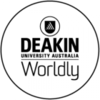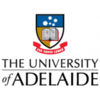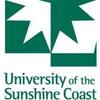Purpose
This study explores the uptake of science, with a particular focus on the way on which science can inform decision making with respect to estuaries. The Estuary Entrance Management Support System (EEMSS) is an example of:
- Successful integration of scientific knowledge in respect to estuary entrance management, and
- Successful community engagement in the building, and operating, of an EEMSS.
Indicative Research Questions
- How were differing knowledge systems brought together in estuary management?
- What processes were involved in the integration of these knowledge systems?
- What form did community consultation take?
- What type of opposition was encountered to the development of the process?
- How was this opposition addressed in the development of the EEMSS?
- What lessons can be learnt from EEMS process and what does it tell us about integrating knowledge systems?
Background
In February 2007 the EEMSS was introduced to protect and manage Victorian estuaries. Victorian estuaries and their attached wetlands are the basis of a complex eco system that support a range of bird and aquatic life. They provide important fish and bird breeding grounds. They are also function as natural filters assisting in improving water quality not only at the mouth of the river but upstream as well. Estuaries are known to support rare and often threatened flora and fauna (Arundel 2006).
There are eight estuaries in study area. These are the Glenelg, Surry, Fitzroy, Eumeralla/Yambuk, Moyne, Merri, Hopkins and Fawthrop Lagoon. These estuaries close intermittently, usually during times of low freshwater inflow. Closure of river mouths can lead to flooding of the surrounding hinterland. Access to community infrastructure such as jetties and roads is limited at these times. Economic and social costs are incurred by local land users and the community. There are however, environmental benefits for surrounding wetland areas.
Artificial openings of estuaries have been occurring since early settlement. Until the 1990s rivers were opened in an ad hoc manner with no authority or supervision. In the 1990s concern about fish kills led to a reassessment of these procedures. A number of issues that needed to be taken into account were identified. These included duration of wetland flooding, the health of the ecosystem, fish health, salinity, erosion, algal blooms, fishing and other recreational activities(Barton and Sherwood 2004).
Concerns about estuary management in Victoria were addressed in 2002 with the Victorian Coastal Strategy (Victorian Coastal Council 2002). This document laid the foundations for the development of guidelines for the management of estuary openings. From this the Estuary Entrance Management Support System (EEMSS) was developed.
The EEMSS is a decision support tool to assist estuary managers in determining whether to artificially open a river mouth. The EEMSS is a computer program which integrates the storage of data and assesses the impact of likely actions by managers. It is based on an ‘assets/threats' model which compares the impact of opening and not opening an estuary (Arundel 2006).
Methods
Stakeholder involvement and effective use of scientific evidence are necessary elements of good environmental governance, although are often difficult to do in ways that are complementary. In order to explore the ways in which stakeholder involvement and scientific evidence were bought together, we investigated the development of an Estuary Entrance Management Support System.
One part of this research explored the development and features of an Estuary Entrance Management Support System and considered its performance against principles of effective environmental management (identified by Stojanovic et al. (2004) (Table 1).
Table 1. Factors determining successful environmental strategies
|
Factors |
Explanation |
|
Comprehensiveness |
Incorporates a wide range of views of issues and brings together a range of stakeholders. |
|
Participation |
Processes which engage communities of interest and the public in the planning and management of the coast. |
|
Co-operation |
Create opportunities for co-operation and collaboration between organisations and individuals. |
|
Contingent |
A flexible and locally specific approach which takes into account local circumstances. |
|
Precautionary |
The ability to take action in advance against possible danger or failure. |
|
Long termism |
The ability to take a long term approach to change and to planning for change. |
|
Focus |
The ability to prioritise actions and focus on specific goals. |
|
Incrementalism |
Management is seen as an iterative process. In this context it is important to be pragmatic and make detailed assessments of important issues. |
|
Adaptability |
The capacity to adjust to new situations and incorporate past learning. |
Source: compiled from Stojanovic et al. (2004; 2009)
The second element of this research investigated how stakeholder participation remains problematic under the project state, and consider what can be done to redress this. Using the Estuary Entrance Management Support System (EEMSS) as a themed investigation we explored how embracing participatory logic can assist in identifying and overcoming the short termism and other difficulties associated with the project state. We began with an outline of the project state and its relationship with participatory stakeholder engagement. We then developed the concept of participatory logic and explained its essentially political nature. Following this we described the EEMSS project and explored its diffusion and scaling up in terms of its participatory logic. We concluded that the concept of participatory logic provides for a richer understanding of the way in which contested knowledge can inform coastal management.
Research Participants
- Western Coastal Board; Glenelg Hopkins Catchment Management Authority; Warrnambool City Council; Moyne Shire Council; Glenelg Shire Council; Port Authorities; Commercial, community and environmental organisations; CSIRO.
Key Findings
The EEMSS represents an example where a process of agency and stakeholder interaction has combined to produce a decision support tool which takes account of those three factors; science, regulatory provisions and public values. The experience of the development and implementation of the EEMSS would suggest that governments, in developing future coastal management strategies, would do well to take heed of local initiatives and support them more fully.
Evidence from the EEMSS project indicates that co-operation between the various stakeholders involved was essential for the development of EEMSS and remains an important factor in maintaining the legitimacy of its ongoing operation. Furthermore the EEMSS established a bridging template (i.e. the EEMSS Manual) whereby the processes developed during the lifetime of the EEMSS as a temporary organisation were transferrable to other temporary or permanent settings.
The EEMSS puts emphasis on ‘situating’ knowledge, in the place and at a scale where the stakeholders in the different estuaries were able to exert some control over information use. Through incorporation of local knowledges into the other forms of formal knowledge (eg science, legal-statutory, regulatory etc) the EEMSS achieved the building of trust, ownership and learning.
Like many projects that establish a temporary organization the EEMSS was not immediately adopted as a state wide policy option. The political impetus to transfer the scheme to a more permanent setting has varied. Changes in government have resulted in reduced support for coastal management schemes like EEMSS. This has meant that the higher order rules, which allow participatory mechanisms to be built into policy and enable a context derived response to occur, have not established the EEMSS as a permanent organisation. Furthermore, the movement of staff within and without responsible organizations in response to political expediencies (budget cuts), as well as other reasons, has exacerbated the loss of institutional learning necessary to drive the operationalization of the scheme.
This impacts upon the processes of ‘participatory logic’ a concept we built as a result of our analysis of the EEMSS investigation. Participatory logic may be summarised as the:
- Institutionalization of the processes that derive from stakeholder co-production and co-management (not just ways of bringing publics into technical decisions but significant deliberation over aspects of the design which require some convergence in terms of allocation of value);
- Ability and capacity to make meaningful decisions about issues of importance in an on-going way thus allowing for the up-date of science input as well as changing social knowledge;
- Inclusion of all stakeholders in the process which is an issue of justice and equity;
- Flexibility and willingness of central policies to enable participation by stakeholders at local level which feeds back up the chain to central policy and program;
- Allowance for pathways for the uptake of all knowledge systems including building the capacity of all stakeholders to fully comprehend other knowledge forms.
Participatory logic establishes a process whereby stakeholder engagement in the initial project setting continues even when the project moves from temporary organization to a more permanent institution. Consequently participatory logic is not a matter of mere dissemination of knowledge but rather the development of platforms where the range of stakeholder knowledge can be fully deliberated.
Key outputs
- Keneley, M., O’Toole, K, Coffey, B. & Macgarvey, A. Stakeholder Participation in Estuary Management: The Development of Victoria’s Estuary Entrance Management Support System (EEMSS), Australian Journal of Environmental Management (In Press)
- O’Toole, K., Keneley, M. & Coffey, B The participatory logic of coastal management under the project state: Insights from the Estuary Entrance Management Support System (EEMSS) in Victoria, Australia. Environmental Science and Policy (In Press)
- O’Toole, K., Keneley, M., Arundel, H., Macgarvey, A., Quinn, G., Mondon, J. & Coffey, B Integrating knowledge systems in local coastal management; the case of an estuary entrance management support system (EEMSS) in Australia. ACES 2011: Conservation Conflicts: strategies for coping with a changing world. Aberdeen Arts Centre, August 22-25th
- O’Toole, K. & Coffey, B. 2012 Towards more integrated and participatory coastal management: Insights from Victoria’s Estuary Entrance Management Support System, COAST TO COAST 2012 Brisbane Convention and Exhibition Centre, 17-21 September
- O’Toole, K & Coffey, B. 2011 Integrating knowledge systems: an estuary entrance management support system (EEMSS) in Australia, Seminar presented at the Coastal and Marine Research Centre at the University of Cork, November.









